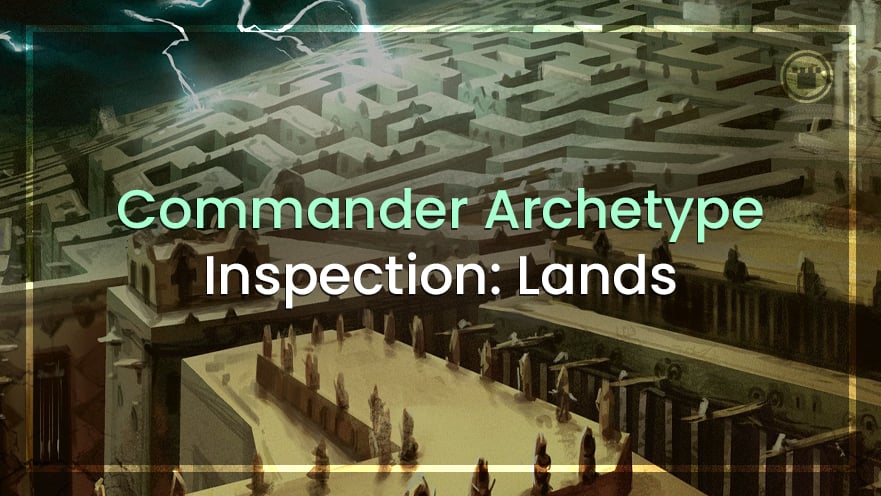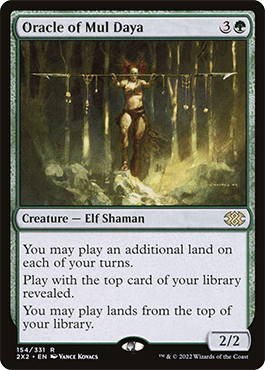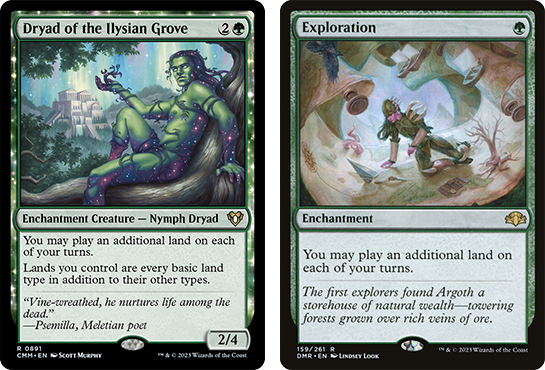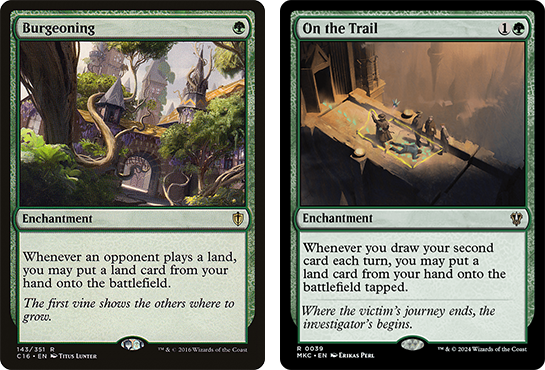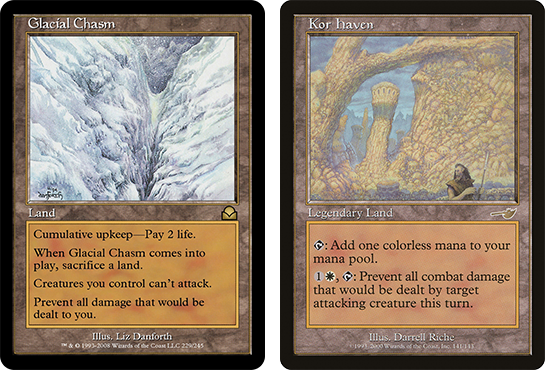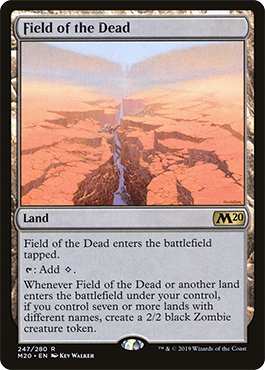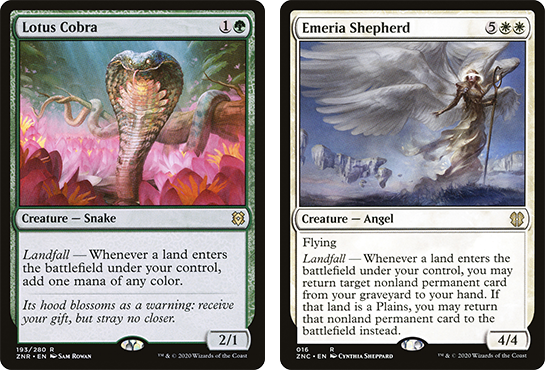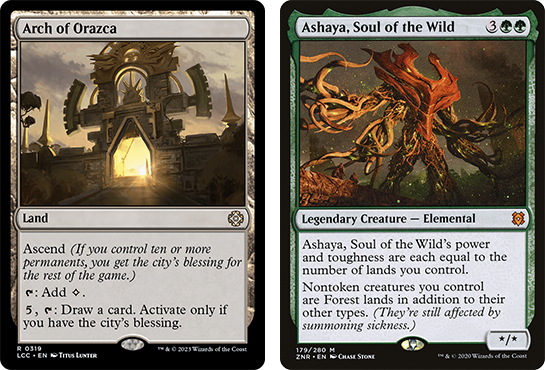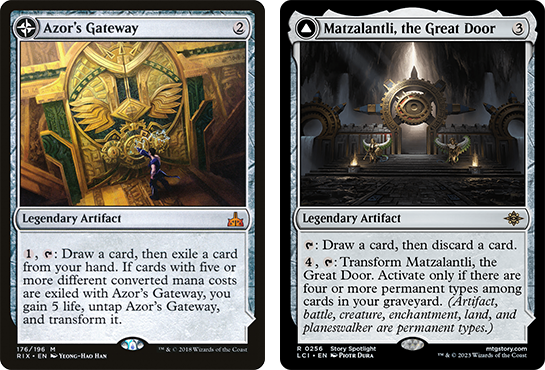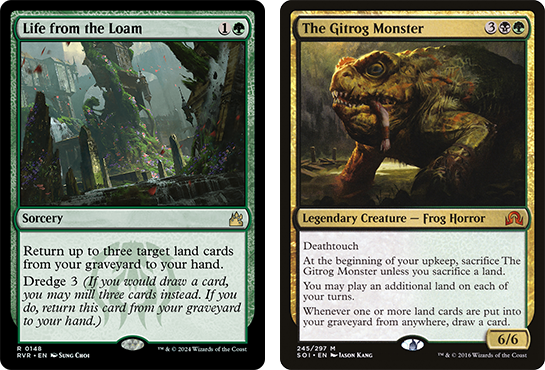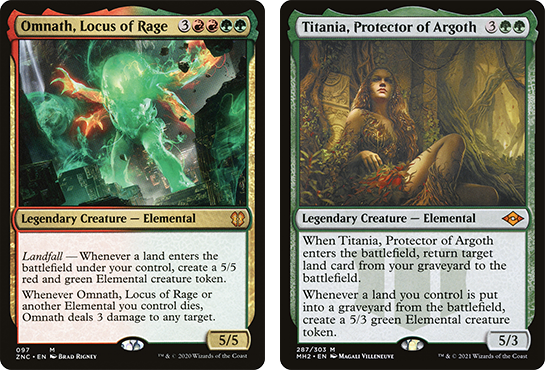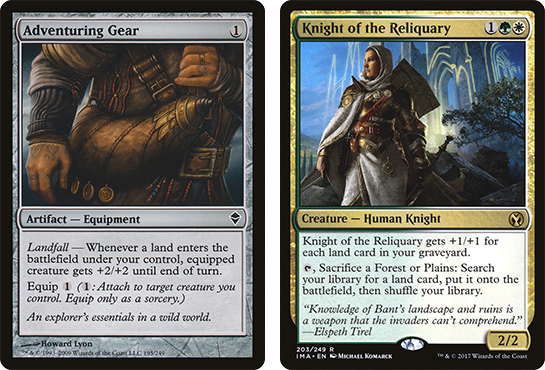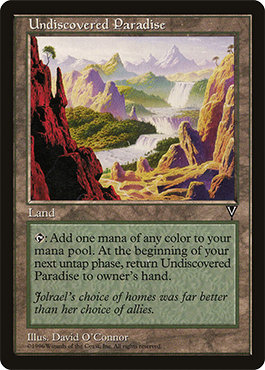Magic has been around for long enough to spin off hundreds of unique mechanics, each with its own unique advantages, dedicated support cards and memorable payoffs. But when you throw them all together in the grand melting pot that is Commander, a few mechanics clearly stand out from the pack. They offer versatile deck building options, consistent performance in different areas of the game and power ceilings which border on unbeatable. Today we’re talking about Lands decks in Commander.
Claiming Lands as the center of your identity might sound funny, since land cards are a big chunk of every Commander deck. But once you see it on the tabletop, it’s immediately clear that Lands is an extremely unique and weird archetype, unlike anything else at the higher power levels of the game.
LIVING OFF THE LAND
I should clarify that this is NOT (at least primarily) a strategy which ramps extra land into play to cast bigger spells early. As in Legacy, the Lands label usually means a deck uses land abilities to affect the game directly, rather than just focusing on their mana production.
Aside from a few outliers, land based effects are actually less powerful and varied than spells, but they offer two major advantages which more than offset this weakness.
Firstly, Lands are the hardest thing in the game to interact with. Playing Lands bypasses the stack, and once in play most removal isn’t allowed to target them. Only their abilities can really be disrupted, and only by specific solutions which will only make up a small % of opposing decks.
Lands’ second big edge is the “deckbuilding cost”, i.e, how much building around this synergy restricts your remaining card choices. Very powerful archetypes often have significant deckbuilding costs: Cascade decks need to avoid low-cost spells, while Artifact decks might play weird or worse versions of an effect just to fit one more artifact-type card in the 99.
But because the Lands engine and support package doubles as your manabase, you end up *gaining* slots for utility spells and interaction vs. the average deck! With so few cards that actually cost mana, you can also purpose-build a manabase specifically to cover those costs, even when they might have very demanding color requirements.
Ignoring curve and color requirements for most of your cards and running an inflated land count gives these decks a very consistent tempo in general. However, I wouldn’t count it as one of the archetype’s advantages – because it is also its most glaring limitation.
CAN’T STOP THE DROP
For virtually any other archetype, consistently making one land drop every single turn is a luxurious dream. But when you’re trying to use lands for nearly every part of your gameplan, being limited to only one per turn isn’t nearly enough.
As such, the ever-present core of any Lands deck is the relatively small class of cards which grant additional land drops per turn. Being able to play extra lands is vital to accelerating your gameplan, unlocking tempo plays (like playing both pieces of a combo together), and even to making some important combos work in the first place!
Most of these enablers are highly sought-after singles, giving Lands decks an expensive reputation. Unfortunately for those on a budget, there’s no real substitute for the role they play in this archetype. There’s lots of cheap ways to ramp extra lands into play, but they usually only find basic lands or cards with a basic land type. Worse, needing to pay a mana cost and cast a spell to put lands into play completely negates those fundamental advantages that drew us to play Lands in the first place!
By contrast, cards which let you make land drops from hand outside of your main phase are highly valuable even if they don’t actually find you more land cards to play. Think about it – we are rarely going to suffer from not enough lands in the “lands matter” archetype.
Why does it matter if you can play lands at instant speed? One answer would be “why does instant speed ever matter?”. The chance to deceive opponents about what mana you have accessible is already an advantage. It’s certainly going to be easier to bait an opponent into disaster if they don’t know what effect you could suddenly tick.
But there are also other mechanics which can really benefit from having fine control over when lands hit the battlefield…
IF A LAND FALLS IN THE FOREST…
Not even this weirdest of Commander archetypes would forsake a chance at value-generating triggers, and there are plenty of satisfying payoffs to reward us every time a land enters the battlefield. So many, in fact, that it has its own ability word.
It’s all but guaranteed that a land-heavy Commander deck will feature some landfall effects, and it’s here that we can see a continuum stretch out from the Lands strategy I’ve been describing towards a more traditional green ramp build at the other end. I’ve explained why we don’t really want the normal library-searching land ramp spells here, but they do work very well with landfall triggers. So if you’re maximizing those effects, then it’s easy to drift away from the weird, expensive niche of pure Lands decks.
But remember that we’re using these cards to round out the edges of our list, not as the core of our strength. A second-best return on landfall can still be very significant, and that’s without considering the list of related triggers and mechanics that Lands decks can leverage with little extra effort.
Anything that counts your number of lands – or permanents, such as the City’s Blessing – is going to be very consistent for us. The versions which count lands of a specific type can be dependent on your build, but for Swamps and Forests you can rely on Urborg, Tomb of Yawgmoth and Yavimaya, Cradle of Growth.
Effects which copy, discount, or otherwise synergize with activated abilities are also a huge winner here. If Zirda, the Dawnwaker is in your colors then it’s a slam-dunk inclusion: mana-producing abilities mean almost every land card meets the companion requirement, and a two-mana discount on everything adds up very fast!
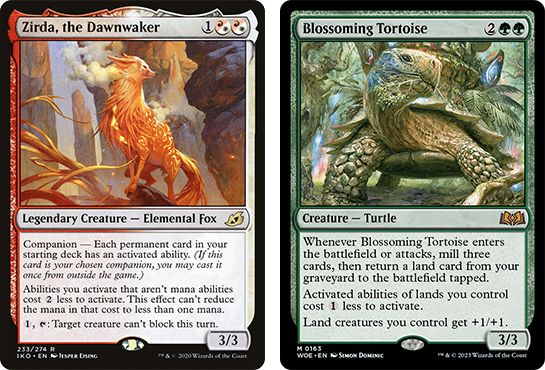
A three-mana discount on everything adds up to a 20/20 flying indestructible token, oddly enough
Thinking a bit more laterally, Lands is also in a weirdly good spot for mechanics which care about having lots of cards in hand. Land Tax and its successors show that it’s much, much cheaper to fill your hand with land cards than it is to draw them normally – you can use that bulk directly with Jolrael, Voice of Zhalfir or Hand of Vecna, or you can use draw-discard effects to convert this “virtual card advantage” into actual card advantage.
Discarding land cards to these effects isn’t even a real drawback – after all, recurring lands from the graveyard is what truly unlocks this archetype’s ultimate potential.
NIGHT OF THE LOAMING DEAD
In Constructed formats where Lands is prominent, it gets categorized as a graveyard-centric deck. A lot of powerful lands sacrifice themselves to activate abilities, so land recursion is an easy way to multiply their impact.
Less obviously, playing lands from the graveyard helps make the most of all our additional land drops. Finding three or more lands to play each turn can get very difficult as the game goes on… unless you’re just playing the same three lands from the graveyard every turn and sacrificing them.
This is admittedly the glowing weak point of any Lands deck when it comes to enemy interaction – having your graveyard exiled or Crucible of Worlds blown up is a serious setback. But imagine looping the strongest utility lands in the game while constantly triggering Avenger of Zendikar on the way in and Titania, Protector of Argoth and Omnath, Locus of Rage on the way out!
That kind of endless value train only takes a couple of turns to grind opponents to dust – and combined with the unique resilience of Lands and the flexibility of its many tutoring effects, we can finally understand how it has cemented a spot among the most powerful archetypes of Commander.
ONWARD TO THE PROMISED LAND
Lands is the sort of archetype which tends to attract lifelong fans, and it’s easy to see why. Compared to its power-level peers, Lands has a completely unique playstyle, uses lots of weird and interesting cards, and has very open-ended deckbuilding options. You can play it in virtually any color combination that includes green, and tune your gameplan towards aggro, midrange, control or combo as you see fit.
Unfortunately, all that creativity and potential stems from the rather expensive foundation of expensive green rares which the deck relies on to play at a viable pace. Scaling up the power level past a certain point has an even more eye-watering price tag. How many Commander players can justify the cost of investment pieces like The Tabernacle at Pendrell Vale, Gaea’s Cradle and Mox Diamond to play a casual Friday night game? I know that personally, having this golden fence around the ultimate form of the archetype has sapped some of my excitement to play it.
As time goes on though, I have faith that the land(s) will heal and the archetype will continue to grow and bloom. So many new powerful cards are printed every year, and effects which were once uniquely irreplaceable (and thus expensive) become commonplace. Making the full spectrum of Lands decks accessible would be a huge win for the community, allowing every player to really explore an aspect of Magic we usually take for granted.

Tom’s fate was sealed in 7th grade when his friend lent him a pile of commons to play Magic. He quickly picked up Boros and Orzhov decks in Ravnica block and has remained a staunch white magician ever since. A fan of all Constructed formats, he enjoys studying the history of the tournament meta. He specializes in midrange decks, especially Death & Taxes and Martyr Proc. One day, he swears he will win an MCQ with Evershrike. Ask him how at @AWanderingBard, or watch him stream Magic at twitch.tv/TheWanderingBard.

